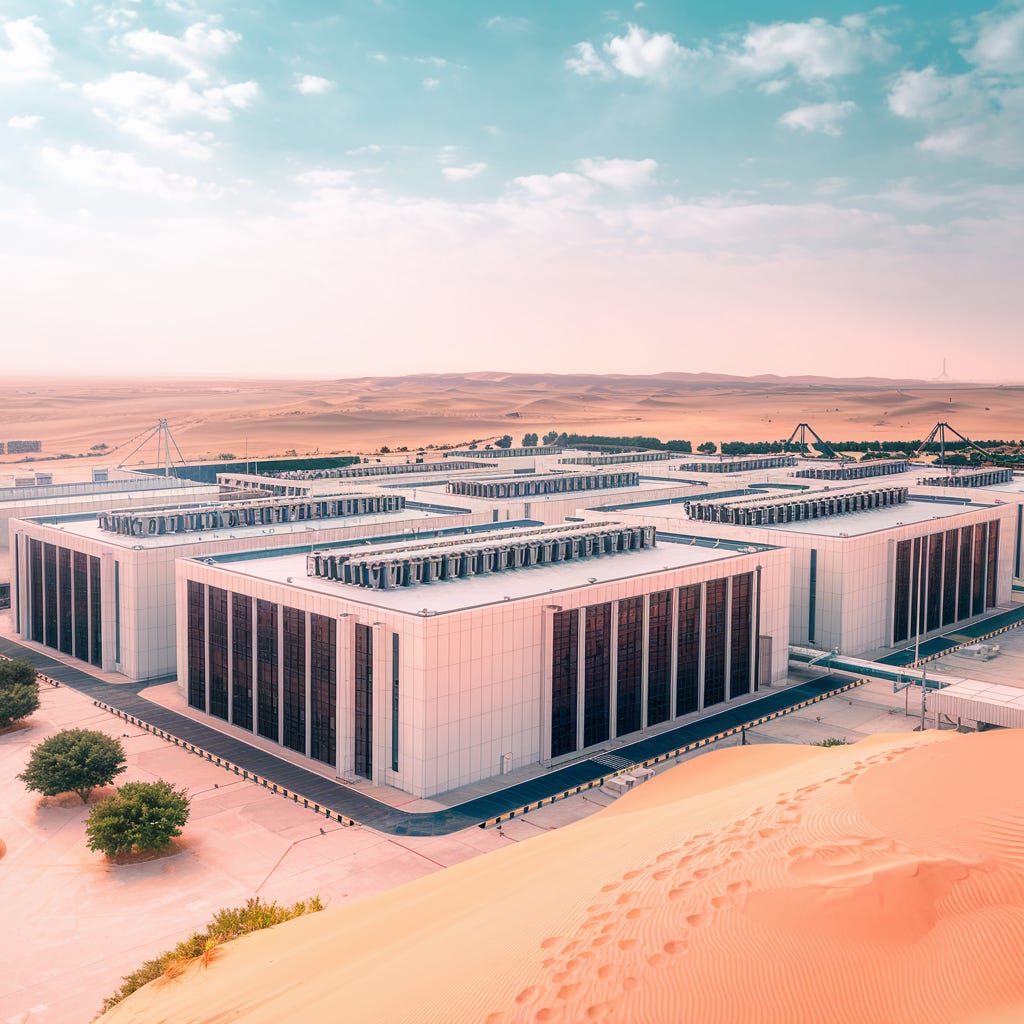Why Sovereign AI Is Rewriting the Global Infrastructure Map
From Cloud Client to AI Nation-State: The New Digital Power Play
Welcome to Global Data Center Hub. Join 1200+ investors, operators, and innovators reading to stay ahead of the latest trends in the data center sector in developed and emerging markets globally.
For decades, the default strategy was simple:
Train your models on U.S.-based clouds. Consume AI through APIs. Stay focused on use cases, not infrastructure.
But that era is quietly collapsing.
In its place, a more assertive, autonomy-driven model is taking hold, one shaped by geopolitics, culture, and strategic control.
It’s called Sovereign AI.
And it’s being accelerated by three hard truths:
AI models aren’t neutral, they encode the values of those who build them
Inference pipelines have become national security risks
Infrastructure control now defines a country’s digital independence
This article unpacks why sovereign AI is gaining momentum, how “AI factories” are reshaping the stack, and what governments, investors, and operators must understand to compete in a multipolar AI world.
What’s Changing: From Global Cloud to National Compute
For years, the playbook centered on outsourcing.
You trained and deployed models on U.S. or Chinese hyperscale infrastructure. You relied on APIs. You optimized for convenience.
Today, the model is fragmenting, fast.
Governments from Saudi Arabia to Japan, the EU to the UAE, are shifting toward full-stack control. They’re building AI factories designed to run national models with:
High-density GPU clusters
On-prem inference capabilities
Data governance aligned to local laws and norms
The goal isn’t just technical sovereignty. It’s cultural, economic, and political independence in an era where AI decisions shape lives, industries, and public opinion.
Why It’s Happening: Control, Alignment, and Compute as Sovereignty
Three structural shifts are driving the rise of sovereign AI:
1. Models Encode Values
AI is no longer a neutral tool.
Foundation models shape what’s considered fact, what’s censored, and how institutions operate. From grading essays to generating policy drafts, LLMs are becoming invisible arbiters of reality.
When a nation relies on foreign-trained models, it absorbs someone else’s assumptions.
Sovereign AI gives countries a way to define their own truth.
2. Inference Pipelines Are Attack Surfaces
It’s not just about training. It’s about deployment.
Governments are realizing that model inference, the real-time output of LLMs, is a national security vector. If inference is hosted abroad, model behavior, telemetry, or alignment can be tampered with.
Running inference locally, on sovereign infrastructure, is becoming essential.
3. AI Factories Are the New Oil Reserves
The AI era has a physical layer.
Just as oil refineries defined industrial dominance, AI factories (large-scale, GPU-intensive data centers) will define digital dominance.
Nations that control compute, models, and data pipelines will shape global influence.
Those who don’t will be locked out of the next wave of technological sovereignty.
Where This Goes Next: The Rise of AI Hypercenters
Sovereign AI isn’t a PR stunt. It’s a full-stack response to a multipolar world.
Let’s break it down:
Build:
Secure sites with direct power access. Prioritize locations near generation capacity, not just fiber or land. Design facilities around dense, high-efficiency GPU workloads, not legacy CPU infrastructure.
Own:
Maintain jurisdictional control over all infrastructure layers: compute, power, network, data. Avoid over-reliance on foreign APIs or model weights. Control inference as much as training.
Develop:
Train and align models using local language, data, and norms. Customize alignment layers for national priorities: education, healthcare, law, defense. Ensure outputs reinforce domestic narratives, not foreign priors.
Export:
Use sovereign models as soft power: offering alignment-compatible LLMs to allies. Shape regional AI ecosystems the way the U.S. once shaped postwar economic alliances through the Marshall Plan.
This approach favors nations with deep capital, strong state capacity, and geopolitical ambition. It disadvantages nations that lack energy, compute, or diplomatic leverage.
What Smart Governments and Investors Are Doing Right Now
Whether you’re a state building capacity or a fund deploying capital, here’s what the most strategic players are doing:
Investing in AI factories: 500MW+ clusters with custom cooling, renewable power, and GPU-forward design
Going beyond ESG: Securing green PPAs not just for sustainability, but for access to green capital pools
Aligning culturally: Ensuring models reflect national values, history, and regulatory norms
Exporting infrastructure: Using AI as a tool of diplomacy and influence, just as finance, telecom, and media once were
Building trust layers: Prioritizing transparency, red-teaming, and open alignment protocols to avoid black-box dependencies
Final Thought: The Stack Has Been Redrawn
AI infrastructure isn’t just a technical stack anymore.
It’s a geopolitical asset.
It’s a cultural expression.
It’s a currency of power.
In this new era, M&A isn’t enough. Cloud APIs aren’t enough. Even great models aren’t enough.
Control is.
The next great AI powers won’t be those who merely consume the best tech.
They’ll be the ones who build it, own it, align it, and export it.

